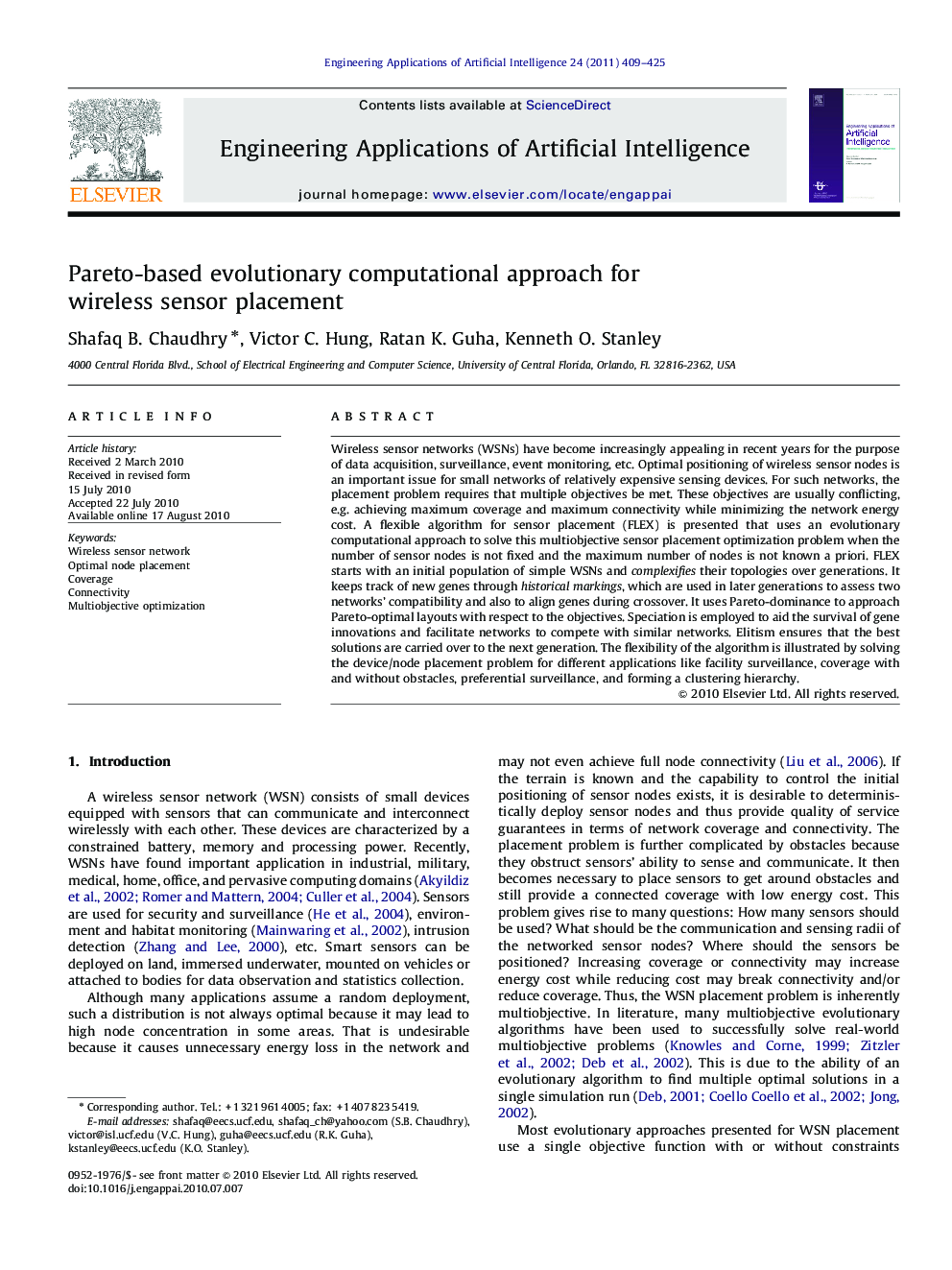| کد مقاله | کد نشریه | سال انتشار | مقاله انگلیسی | نسخه تمام متن |
|---|---|---|---|---|
| 381124 | 1437475 | 2011 | 17 صفحه PDF | دانلود رایگان |

Wireless sensor networks (WSNs) have become increasingly appealing in recent years for the purpose of data acquisition, surveillance, event monitoring, etc. Optimal positioning of wireless sensor nodes is an important issue for small networks of relatively expensive sensing devices. For such networks, the placement problem requires that multiple objectives be met. These objectives are usually conflicting, e.g. achieving maximum coverage and maximum connectivity while minimizing the network energy cost. A flexible algorithm for sensor placement (FLEX) is presented that uses an evolutionary computational approach to solve this multiobjective sensor placement optimization problem when the number of sensor nodes is not fixed and the maximum number of nodes is not known a priori. FLEX starts with an initial population of simple WSNs and complexifies their topologies over generations. It keeps track of new genes through historical markings, which are used in later generations to assess two networks’ compatibility and also to align genes during crossover. It uses Pareto-dominance to approach Pareto-optimal layouts with respect to the objectives. Speciation is employed to aid the survival of gene innovations and facilitate networks to compete with similar networks. Elitism ensures that the best solutions are carried over to the next generation. The flexibility of the algorithm is illustrated by solving the device/node placement problem for different applications like facility surveillance, coverage with and without obstacles, preferential surveillance, and forming a clustering hierarchy.
Journal: Engineering Applications of Artificial Intelligence - Volume 24, Issue 3, April 2011, Pages 409–425